In the 1960s, specialists discovered errors that at first seemed terrifying in domestic buildings that were then only 20-30 years old. Huge cracks appeared in some of the relatively young houses, which were in principle completely well-built. These serious defects did not appear due to previously unrecognised war injuries or the fighting during the 1956 revolution, but the experts were faced with the fact that the building material itself was faulty.
The problem occurred in several locations in Budapest. On 28 January 1966, the slab of the Margit Island Grand Hotel, which was under renovation, collapsed. A few months later, on 16 September 1966, a problem also occurred in an inner city high-rise apartment building: a huge crack appeared. The 29 October 1967 issue of Népszabadság wrote about the case as follows:
"One of the residents of 4 Rákóczi Road - a professor of the statics department of the University of Technology - noticed the ominous signs on the mentioned day: a previous crack on the wall of the boiler house grew by 40 centimetres in 24 hours. It was no trifling matter, from the extremely fast process experienced in the room, the professor and the other specialists could rightly conclude that the state of the apartment building contained an immediate danger to life."
The investigations began immediately after the Margit Island accident, and five institutions were appointed to prepare the examinations: the Institute of Construction Sciences, the Construction Industry Quality Inspection Institute, the Silicate Industry Central Research and Design Institute, the Geodetic and Soil Testing Company and the Budapest University of Technology.
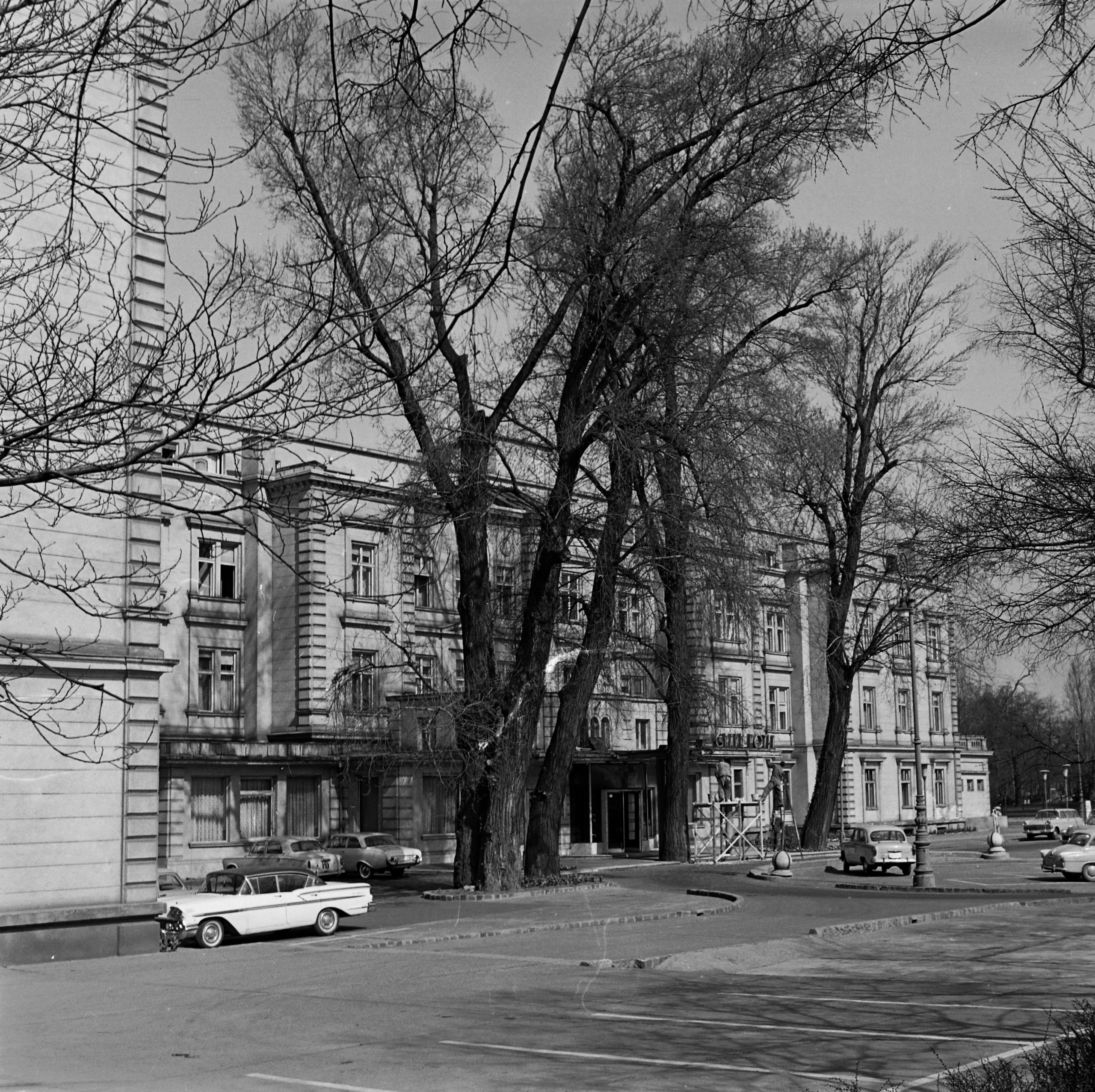
The Margit Island Grand Hotel in 1965, where the slab crashed (Photo: Fortepan/No.: 120757)
The investigation established that the damaged structures were made of bauxite concrete. The construction material to which the defects were attributed was therefore the concrete in the affected buildings.
Concrete is an incredibly strong and durable material, as there are 2000-year-old concrete buildings around the world. Indeed, the secret of concrete construction was not known for one and a half thousand years after the Romans, but the material was produced again at the end of the 18th century, and it began to be used on a large scale in the 19th century.
Today, humanity uses cement the most, which is one of the raw materials of concrete, since it basically consists of nothing but cement, water and sand gravel. However, there are many different types of concrete, and at the beginning of the 20th century, a version appeared in which the traditional Portland cement (which is available today at domestic building material stores) was replaced with bauxite cement. The great advantage of this concrete was that it proved to be as strong after just two days as conventional concrete after four weeks, i.e., it was much faster to work with.
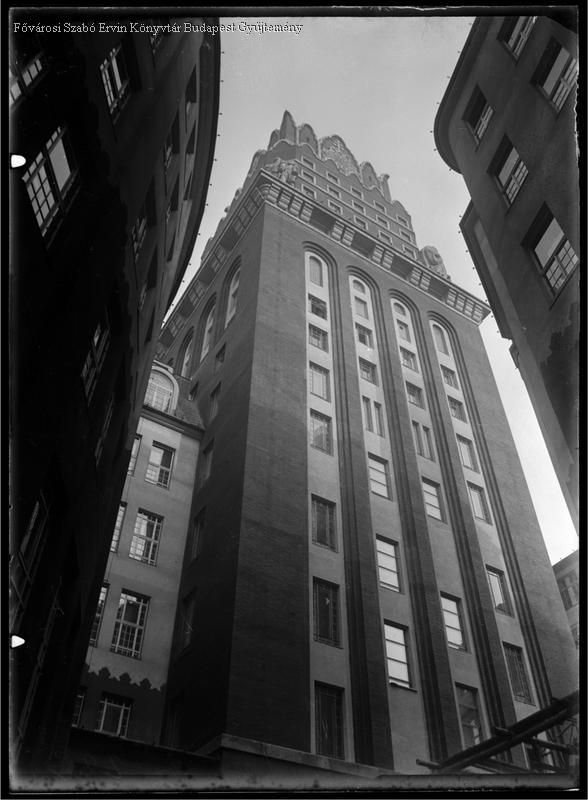
The tower of the building of the National Social Security Institute at 19 Fiumei Road in 1931 (Source: FSZEK Budapest Collection)
It was marketed in Hungary from 1928 and was produced on a large scale until 1942 - at which time they already knew that bauxite concrete had unfavourable properties - but it was only in 1949 that it was completely abandoned. As early as the 1950s, there were certain signs of defects in the material. The tower of the National Social Security Institute (OTI), located at 19 Fiumei Road, was damaged in the fights of 1956, and examinations indicated that there were problems with the structure of the building. The University of Technology then carried out many other tests on other buildings, but no serious problems arose until the 1960s - until the cases described above. The tests after the mentioned accidents showed that chemical processes occur in the bauxite concrete after its solidification, which leads to a decrease in the strength of the concrete.
The problem was that no one had any idea how many houses were built using bauxite concrete. The obviously well-documented constructions, such as the 18-story OTI tower or the lamp factory building of the Egyesült Izzó [United Light Bulbs], were known, but how many private houses, small and large apartment buildings and condominiums used such material was a mystery to the experts.
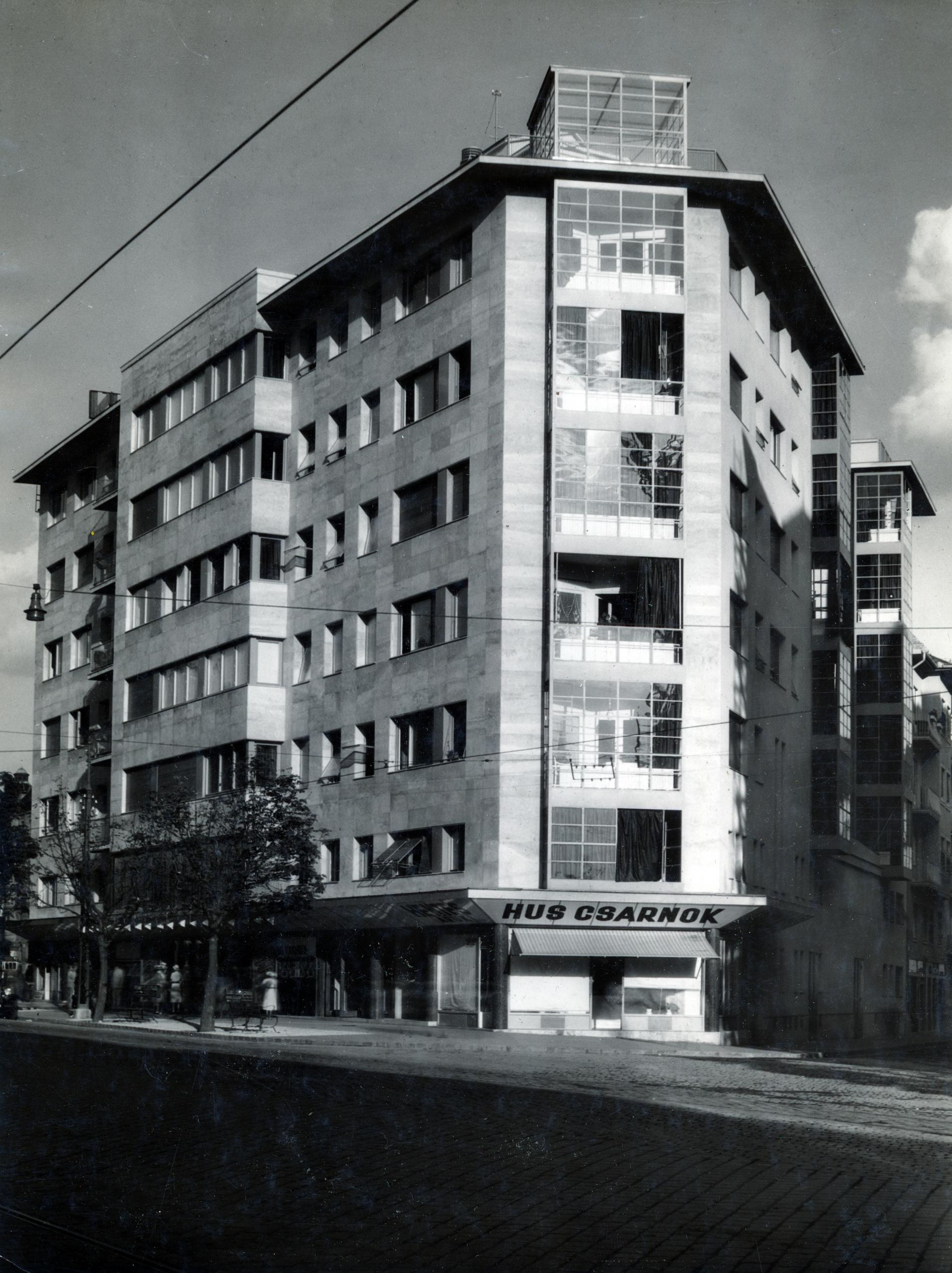
The former Bartók cinema building was also built with bauxite concrete (Photo: Fortepan/No.: 157995)
Since it was not likely that the other problematic buildings would also collapse right before the eyes of a statics professor - it is almost unbelievable that this is exactly what happened at the Rákóczi Road building - they had to act quickly. A program was launched to assess the bauxite concrete buildings in Budapest, the deadline for which was 31 October 1967. A total of 36,000 state-managed buildings in Budapest had to be inspected. The work was presented in the 5 October 1967 issue of Népszava as follows:
"Based on the reports received, the Budapest City Council will set up a cadastre of buildings containing bauxite concrete, order their detailed static examination and, where urgent intervention is necessary, do so immediately. The list of bauxite concrete constructions in the capital is not yet complete. Still, it is already known that apart from the house at 4 Rákóczi Road, the tower and slab of the SZTK building were also made with bauxite concrete. The same construction method was used at many cinemas in Budapest, such as the Ady, Bartók and Vörösmarty cinemas, which, as it is known, is already closed. Many architects also come forward, announcing where and when they have used bauxite concrete in the past, and this is of course a big help."
The survey was also made more difficult by the fact that not only the buildings built during the affected period but also those renovated at the time had to be examined. Although the first list was completed by the set deadline, the survey took three years. They found that 44 per cent of the inspected buildings were adequate, where inspections were required every five years, 32 per cent belonged to the "B" category, where inspections were carried out every three years, while the other buildings examined, i.e., in the "C" category", required immediate intervention, as part of this, for example, the 18-story tower of OTI was demolished.
All over the country - until 1990 - 2,034 buildings were added to the list, the largest part of which, a total of 1,717 buildings, were in Budapest. This number clearly shows that the problem primarily affected the capital. It is true that the specialists still had surprises after this, even in the 1990s it was discovered that some buildings contained bauxite cement.
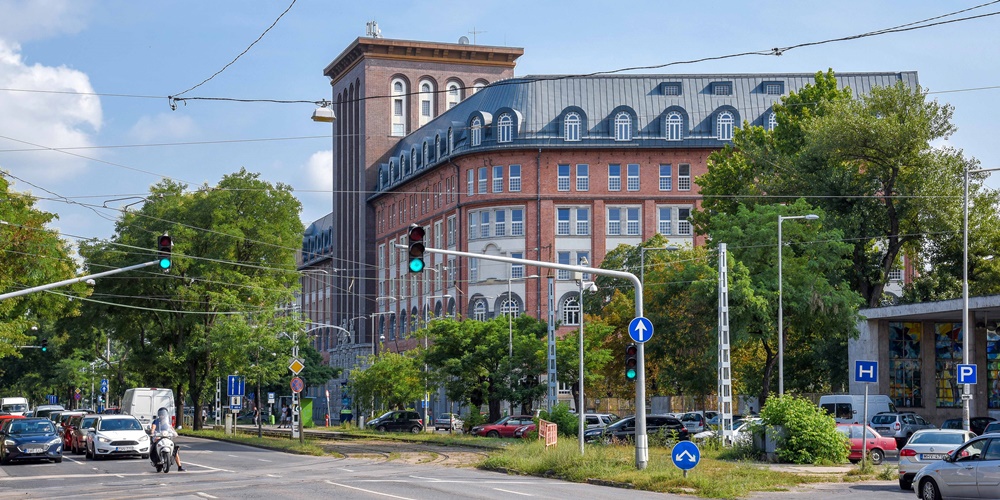
The former OTI office building is still standing today (Photo: Balázs Both/pestbuda.hu)
Half a century has passed since the bauxite concrete panic, the houses are still standing, what could be the reason for this? Did they overreact to the problem in the 1960s? No. Bauxite concrete buildings are still registered, their database is public, it is kept up-to-date by ÉMI Non-Profit Limited Liability Company for Quality Control and Innovation in Building (ÉMI Non-profit Llc.), and can be accessed by anyone at emi.hu. On the same website, visitors can read the following about bauxite concrete buildings, which explains why no major disasters have occurred in the last fifty years:
"By the end of the 60s, it became clear that specific chemical reactions start in the bauxite concrete material after solidification, leading to a decrease in strength. Based on more than thirty years of testing experience, it can be concluded that the rate of strength reduction is lower than previously assumed, but not negligible. The actual situation can be further worsened by adverse environmental effects such as humidity and high temperature. It is also necessary to take into account the fact that bauxite concrete has a lower strength than concrete made out of Portland cement. Therefore, regular and professional monitoring of bauxite concrete structures, as well as periodic instrumental testing, is necessary."
Cover photo: The Extra Department Store building in 1968. The apartment building cracked before the eyes of an architect professor (Photo: Fortepan/Main Photo)

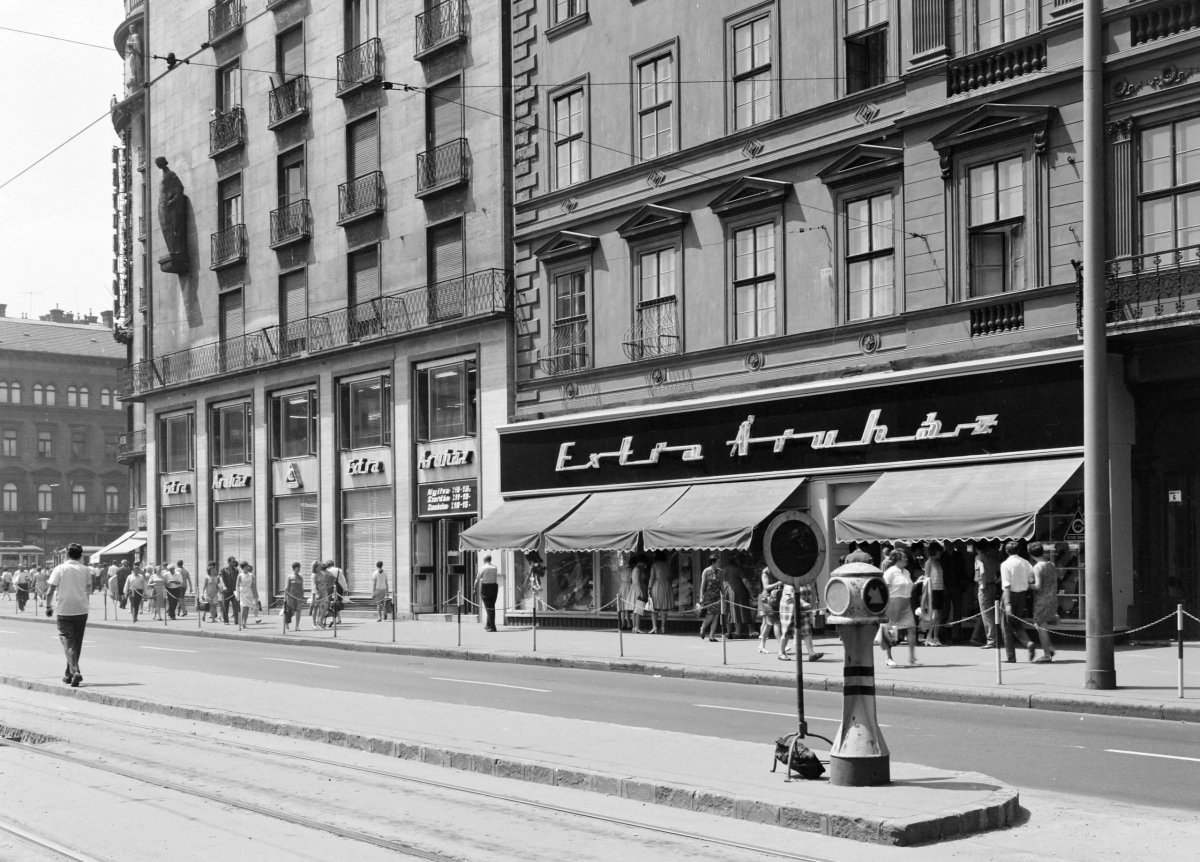


































Hozzászólások
Log in or register to comment!
Login Registration